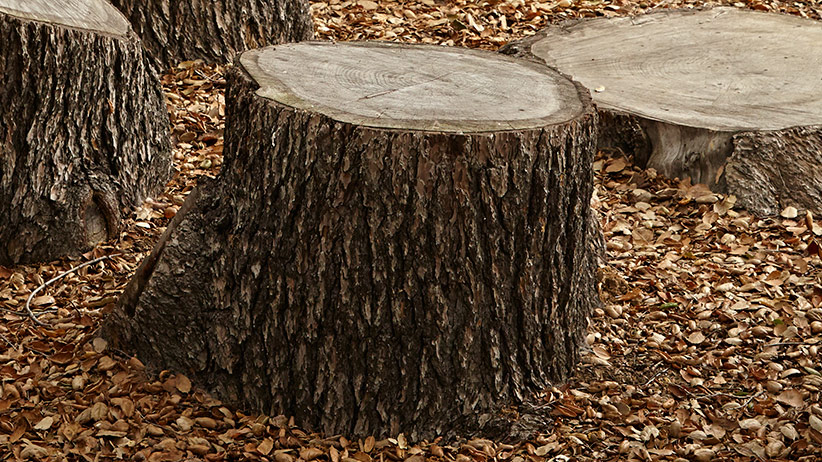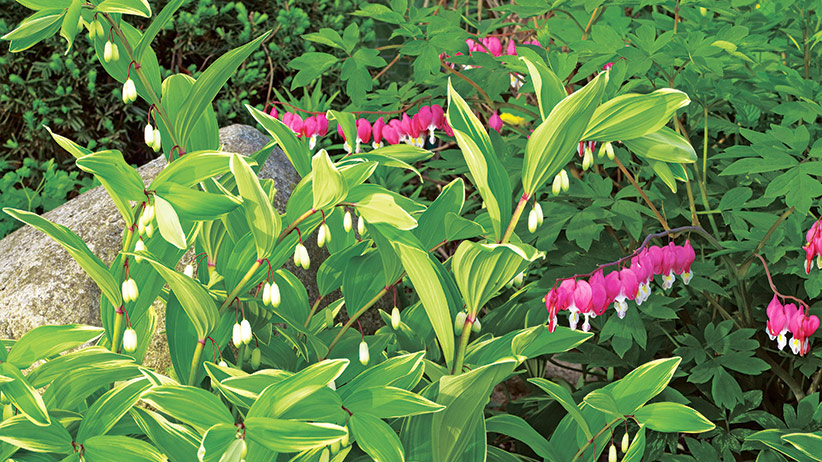Embracing changes and transformation in the garden
When Joyce and Jon Householder moved into their Kansas home in 1988, they didn’t inherit a garden — just an overgrown lawn and a few shrubs. But with a lot of hard work Joyce has transformed this blank slate into the ultimate reprieve from everyday life.
She prefers a laid-back approach to gardening and allows plants to grow where they please, creating beds and borders full of life and color. Learn about the challenges she has faced and take a walk through this unique and resilient garden. For an added bonus, you can take a virtual tour of the gardens with Joyce in the Talk & Tour video above!

Terraced borders
Over the years Joyce has transformed her 1¼ acres into the garden oasis it is today. It all started in the front yard, which sits at the bottom of a steep slope. While this was a fun sledding hill for her kids in the winter, it was a pain to mow. After a few summers of struggling with the lawn, she decided to install terraced flower beds instead, and that was the project that started it all.
You Might Also Like:
Watch More Talk & Tour Videos
Beautiful Stone Raised Garden Beds
Colorful Summer Garden Bed Ideas
Design A Welcoming Front Yard
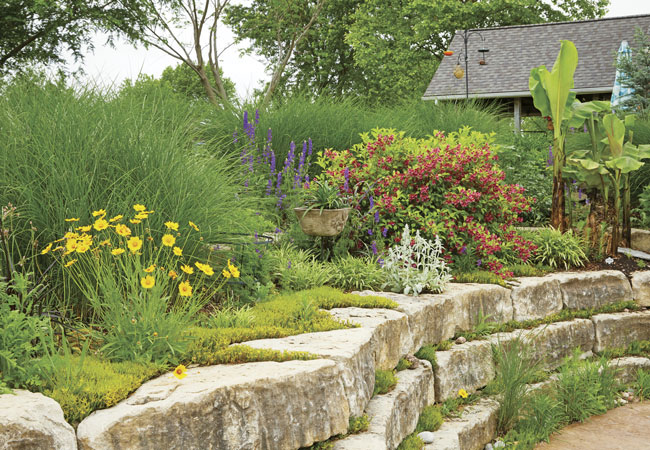
Create structure with retaining walls
Enlisting the help of neighbors and friends, the couple ripped out the existing junipers (Juniperus communis) and railroad ties and chopped up the original sidewalk leading to the front door. Then they brought in topsoil, leveled out three terraced beds that range from 12 to 20 feet wide and 5 to 12 feet deep, and installed limestone retaining walls to hold the soil in place. These beds hold colorful perennials that bloom throughout spring and summer, such as coreopsis (Coreopsis spp. and hybrids), purple coneflower (Echinacea purpurea), salvia (Salvia nemorosa) and baptisia (Baptisia spp. and hybrids). Shrubs and small trees, such as panicle hydrangea (Hydrangea macrophylla), Drift roses (Rosa hybrid) and Japanese maple (Acer palmatum), add structure and a backdrop all year. Later they installed a second set of terraces that curve along the driveway in the side yard. They used two sizes of limestone blocks to create two 20-foot-long beds and allow for ground cover sedums (Sedum spp.) to trail over in the spaces between the stones and at the base of the front 6-foot tall wall. Walk up the steps and you’ll find yourself in the backyard.
Gardening is unpredictable
A few years ago a tornado passed between this property and the next. Although the home was left standing and their family was unharmed, it took out a flowering crabapple (Malus spp. and hybrids) and redbud tree (Cercis canadensis) near the house, as well as the work shed roof. The aftermath was a yard full of debris and very different growing conditions in the front terraced beds. After the tornado, the perennials near the front entry were suddenly in full sun. Bear’s breeches (Acanthus spinosus) and daylilies (Hemerocallis spp. and hybrids) that hadn’t bloomed well for years started thriving again.
Take advantage of microclimates in your garden
Stone retaining walls store heat from the sun and can create extra warmth for garden beds. The one in the sheltered spot next to the garage is the perfect microclimate to experiment with plants that aren’t normally hardy in this zone 5 garden, such as hardy banana (Musa basjoo). As a Master Gardener, Joyce loves to try new things and stretch her gardening skills, and she’s found a way to overwinter this not usually-hardy banana in the ground. It makes quite a statement and is one of the first things people see when they pull into the driveway.
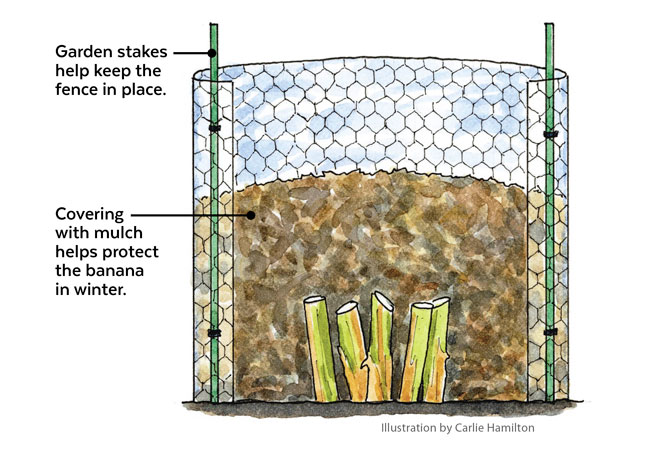
4 Easy steps to overwinter bananas
Here’s how Joyce protects her banana in winter. This technique could also work for many plants that are usually not cold hardy enough for your garden.
- After the first frost, cut the banana down to about 1 foot from the soil.
- Build a 3- to 4-foot-tall chicken wire or hardware cloth fence around the remaining stems.
- Add a few handfuls of granular high-nitrogen fertilizer to the soil for energy next spring and surround the plant with organic mulch, such as bark or leaves.
- Remove the mulch after danger of frost has passed and you can see new growth poking through.

More slope solutions
The steep slope caused Joyce more problems than just mowing and affected her entire lot, which also collected water from neighboring properties. Rainwater used to rush down from all sides of the yard, eroding soil, and collected at the bottom of the driveway.
Smart erosion solution: Install a permeable driveway
The first project Joyce and Jon tackled to address this problem was to make part of their driveway permeable. They removed a portion toward the top of the long drive, installed a layer of sand, laid pavers in a fun design, then filled in with pea gravel. This allows some of the rain to filter into the soil as it runs down the driveway.
You Might Also Like:
Save Water with a DIY Rain Barrel
Colorful Slope Garden Plan
DIY Rain Chain
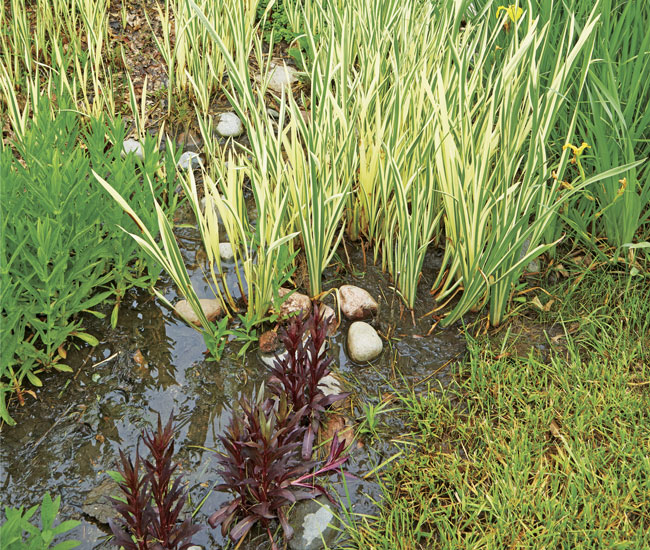
Add a rain garden
However, the permeable driveway doesn’t catch all of the water. In addition, Joyce took advantage of a local rain garden grant program and installed a 35×15-foot rain garden in the low spot at the bottom of the driveway. This bed holds water runoff until it’s absorbed back into the ground. Notice how water is pooling before soaking into the soil in the photo directly above? This photo was taken the morning after a storm.
Installing a rain garden helps reduce water pollution and prevent flooding, all while providing a beneficial habitat for wildlife. It’s an attractive solution to a not-so-attractive problem. This spot already sat in a ditch, but to build the bed, they dug down a bit more, then mixed in a layer of heavy clay soil with the existing soil to help prevent further erosion. Finally, starting with a list of recommended native plants from their municipality, they planted the bed with perennials and shrubs that thrive in heavy, wet soil, and also tolerate drying out when rain is scarce.
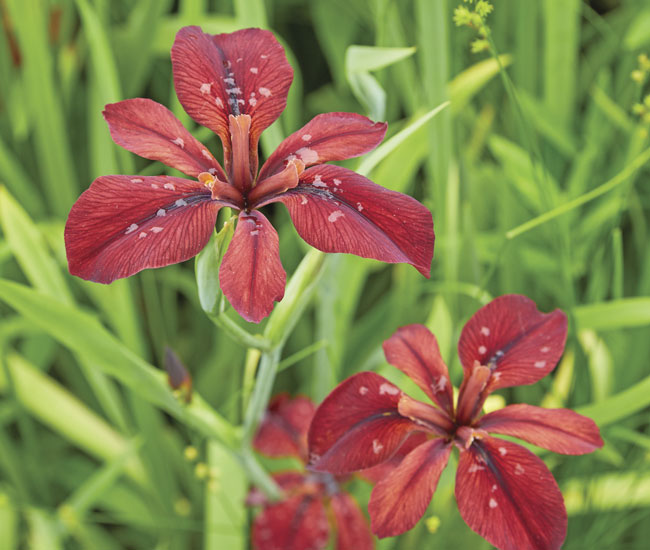
Rain garden plants
Plants that are good candidates for a rain garden have extensive root systems to help them quickly absorb water, prevent erosion and retain moisture during dry periods.
- Amsonia Amsonia tabernaemontana
Pale blue flowers from late spring to early summer; full sun to part shade; 2 to 3 ft. tall and wide; cold hardy in USDA zones 3 to 9 - Copper iris Iris fulva
Copper-colored flowers in early summer; full sun to part shade; 2 to 3 ft. tall, 1 to 2 ft. wide; cold hardy in USDA zones 5 to 9 (above) - Gray-headed coneflower Ratibida pinnata
Tall yellow flowers with prominent center “cones” in summer; full sun; 24 to 48 in. tall, 18 to 24 in. wide; cold hardy in USDA zones 3 to 8 - Joe-Pye weed Eutrochium maculatum
Pink blooms from midsummer to fall; full sun to part shade; 3 to 7 ft. tall, 2 to 4 ft. wide; cold hardy in USDA zones 3 to 9 - Maiden grass Miscanthus sinensis
Silver, bronze, pink, copper, tan or burgundy plumes from late summer to fall; full sun to part shade; 1 to 12 ft. tall, 1 to 6 ft. wide; cold hardy in USDA zones 4 to 9
You Might Also Like:
How to Plant Native Plants in Natural Layers
Tips for Choosing Native Plants for Your Garden
Best Plants for Wet Soil
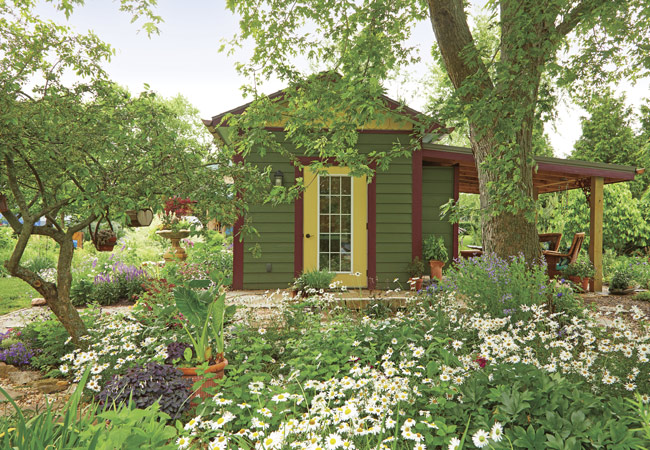
A natural approach to gardening
Once you’ve reached the backyard, you can meander through a series of beds packed with colorful shrubs, perennials and reseeding flowers like the purple larkspur (Consolida ajacis) above. If a flower, such as chamomile (Chamaemelum nobile) or forget-me-not (Myosotis sylvatica), reseeds, Joyce will usually let it complete its life cycle unless it’s overcrowding perennials or popping up in ground covers. She also finds perennials like coreopsis (Coreopsis spp. and hybrids) and purple coneflowers (Echinacea purpurea) emerging in her garden beds because of snacking birds like goldfinches. Every year the garden transforms and looks a little different. One year, there might be more larkspur (Consolida ajacis) in the border. The next year, it might show off an assortment of fluffy fennel (Foeniculum vulgare) and purple and pink cosmos (Cosmos bipinnatus).
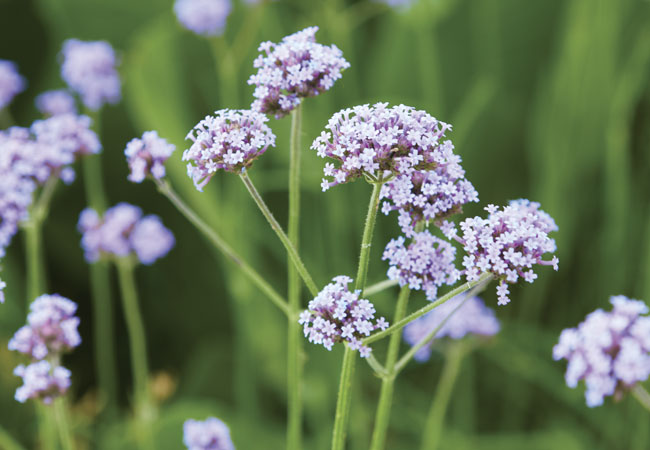
Grow reseeding flowers
There is something magical about discovering a new plant popping up in unintended places. Here are a few of the plants you can find self-seeding in Joyce’s garden.
- Corn poppy Papaver rhoeas
Annual; red, white or purple flowers from early summer to fall; full sun; 9 to 18 in., tall, 6 to 12 in. wide - Cosmos Cosmos bipinnatus
Annual; red, yellow, pink, lavender, white or bicolor flowers from summer to fall; full sun; 12 to 48 in. tall, 9 to 24 in. wide - Larkspur Consolida ajacis
Annual; purple, blue, white or pink flowers in summer; full sun; 18 to 24 in. tall, 9 to 12 in. wide - Spider flower Cleome hassleriana
Tender perennial; pink, white, purple, lavender or bicolor flowers from summer to frost; full sun 3 to 4 ft. tall, 1 to 3 ft. wide; cold hardy in USDA zones 10 to 11 - Verbena Verbena bonariensis
Tender perennial; rose-violet flowers from late spring until frost; full sun; 24 to 48 in. tall, 18 to 24 in. wide; cold hardy in USDA zones 7 to 11 (above)
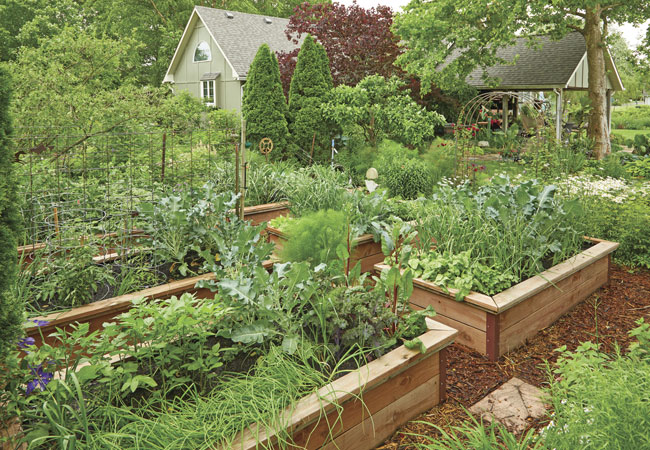
Vegetable garden
Though most of her garden focuses on ornamental plants, Joyce does grow a few of her favorite vegetables in the six 8×4-foot raised beds. The 2-foot-tall beds are made of rot-resistant Douglas fir— a necessity since the property collects so much moisture. Every spring, she loosens the soil with a spade, then adds a 2-inch layer of her own compost before planting.
You Might Also Like:
Long-lasting Annuals for Your Garden
How to Build a Wood Raised Garden Bed
Small Vegetable Garden Ideas
How to Collect seeds from Your Garden
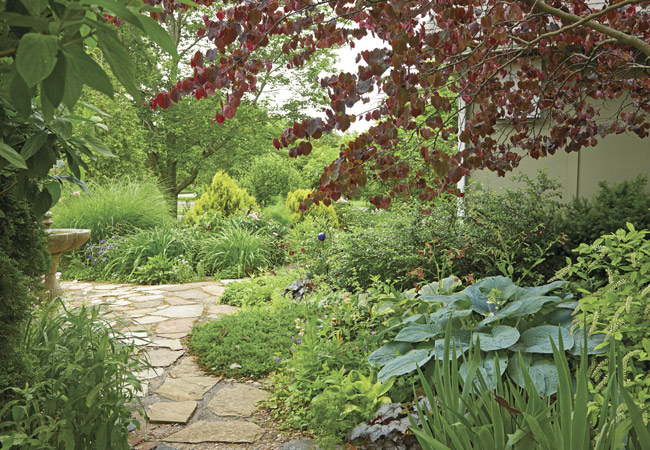
Backyard Oasis
Growing conifers throughout the garden provides year-round structure, color and shelter for wildlife. The arborvitae hedge (Thuja occidentalis) at the edge of the property offers screening and privacy, and Joyce mixes other types of conifers into her flower beds as multiseason accents. Some of her favorite specimen conifers are unique and airy weeping blue atlas cedar (Cedrus atlantica ‘Glauca Pendula’), ‘Green Knight’ oriental spruce (Picea orientalis) and ‘Lemon Thread’ false cypress (Chamaecyparis pisifera).
Shady retreat
Though most of the backyard is sunny and open, her sycamore (Platanus occidentalis), maple (Acer spp.), river birch (Betula nigra) and mimosa trees (Albizia julibrissin) along the edge create shadier borders close to the house. Here, walk the paths made of limestone steppers and Joyce’s leaf castings, and you’ll see a pond, a charming collection of hypertufa fairy houses and her hosta (Hosta hybrids) rescue bed. Years ago, Joyce worked for a hosta breeder. For every variety that is selected to bring to market, several more are thrown away. She couldn’t let those poor plants go to waste, so she brought home the ones she liked for her own garden. This is a perfect example of her “no plant left behind” approach to gardening. There’s always room for a few more!









